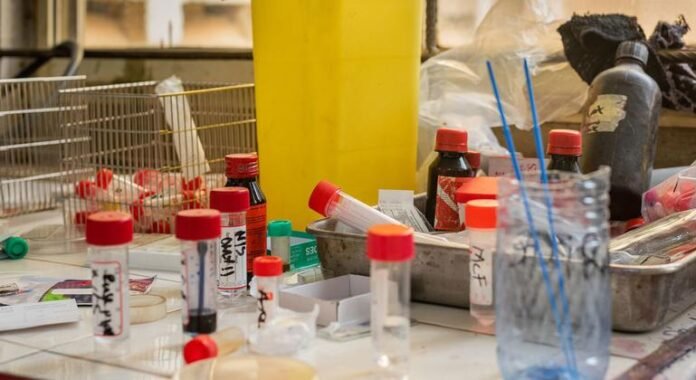World Antimicrobial Awareness Week is observed from November 18 to 24 to raise awareness and cooperation against the existence and spread of drug-resistant pathogens.
In fact, when antimicrobial drugs cease to have an effect on microorganisms such as bacteria, viruses, and parasites, antimicrobial resistance occurs.
Due to drug resistance, antibiotics and other antimicrobial drugs become ineffective, making it difficult or impossible to treat infections and increasing the risk of disease spread, serious illness, disability and death.
Disinfectants are often used as a low-cost alternative to biosecurity, sanitation, and vaccination.
But it also leads to drug resistance, which allows antimicrobial-resistant microorganisms to spread rapidly within communities and across borders.
Antimicrobial resistance can enter the general population not only directly from drugs but also through the food chain and spread to agricultural products and the environment, contaminated waterways, wildlife and soil.
Overuse and misuse of antimicrobial drugs in animals can cause production losses, food insecurity and ultimately human health.
To combat antimicrobial resistance in animals and food, the Food and Agriculture Organization of the United Nations (FAO) in India, in collaboration with the Government of India, has launched an initiative called INFAAR, which collects and reports data on the problem, a major step towards a solution.
Under this, a network of laboratories known as the Indian Network for Antimicrobial Resistance (INFAAR) has been established to monitor antimicrobial resistance in the fisheries and livestock sector.
Ways to collect data for research and solutions
India Network for Fisheries and Animal Antimicrobial Resistance (INFAAR) was started in 2016, establishing a strong framework for AMR surveillance.
In December 2017, surveillance of animal antimicrobial resistance was included in the National Action Plan, laying the foundation for INFAAR’s activities.
Continuous troubleshooting and data refinement processes were adopted to ensure accuracy and reliability of data collected. INFAAR is characterized by its standardized approach to data collection and analysis.
All members of the network are trained through a rigorous methodology and follow the same validated laboratory testing and sample testing protocols. This uniformity ensures high-quality, national-level data on antimicrobial resistance.
WHONET is used for data management, and all members participate in proficiency testing or external quality assessment schemes.
Despite the challenges posed by the COVID-19 pandemic, INFAAR members continue to collect and analyze AMR surveillance data.

Expansion of the project
Recognizing the importance of INFAAR, the Government of India has allocated funds for the next five years to ensure sustainability and expansion of the network.
In addition, FAO will continue to provide technical support, including expanding INFAAR, introducing genotypic surveillance and improving documentation and data management.
The establishment of INFAAR brought several additional benefits, including improved awareness of AMR, greater collaboration between the human and animal health sectors, and increased capacity in laboratory and data management.
Partnerships and collaboration between the public and private sectors will need to continue as the network evolves.
This collaborative approach will not only help strengthen capacity to address emerging challenges, but also help build a strong framework for long-term food security and safety.
Currently, eight fisheries research institutes and 11 livestock research centers, including three universities, are actively involved in AMR surveillance in food and aquatic animals.

